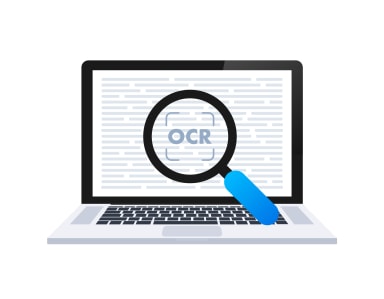Are you one of the many smart entrepreneurs that are confused about working capital? I was. Perhaps your accountant’s explanation made your eyes glaze over – like mine did.
From one entrepreneur to another, you need to get wise about working capital, today, if you plan to keep your business doors open. Because the #1 reason for business failure is lack of working capital. Don’t become a business failure statistic.
First stop looking only at your bank balances or profit percentages. Working capital is a far more critical factor for your company survival.
From a business management perspective here’s all that you need to know about what is working capital is, the amount you need, how to manage it like a pro, and if you are short on working capital how to either get financing and how to reduce your working capital needs without a loan.
Learn how to confidently be in control of your businesses working capital so you can take proactive steps to avoid being another failure statistic that could have been saved if the business owner had greater knowledge.
What is Working Capital?
If you ask your accountant what is working capital he/she is sure to answer with a jargon-filled answer such as this: company current assets minus current liabilities. Huh? So what does that really mean?
Working capital is the amount of cash that is available after you paid your liabilities to use for funding daily business operations. An example, Company A has assets (cash in bank, savings liquid assets) of $100,000 and liabilities (bills, loan payments) of $75,000 so they have $25,000 in working capital.
Non-liquid assets such as inventory and unpaid customer invoices can be included in your balance sheet calculations if they can be converted into cash within one year.
Working capital is used to fund daily business operations including payroll, supplier payments, rent, utilities, marketing activities and to purchase inventory.
Why Working Capital is Critical To Business Success
The lack of working capital is the #1 reason for business failure. Owners of these failed firms often were not aware of their working capital needs. Also they did not regularly monitor and manage their cash carefully. Thus they were caught out by lack of funds to pay their bills, buy supplies, pay for marketing activities and capture sales opportunities which directly lead to their firms closure. Don’t be that guy or girl, Keep reading to learn how to make working capital your friend.
This is especially prevalent in fast growing startups which devour cash voraciously to fund their growth. My beauty startup was like this, gobbling up cash fast. Even while our sales increased our cash flow decreased.
How Much Should I Have On Hand?
Healthy small businesses need to have enough cash on hand fund their operating cycle based on a ratio formula.
The ratio is calculated by dividing your current assets by your current liabilities. If your answer is under 1.0 you are in a dire negative working capital situation and need to take action now to generate more cash into your firm, cut your expenses and get a working capital line of credit if it is 2 or above your companies is in good financial health and not overly depending upon converting assets such as inventory and accounts receiving into cash too quickly.
Another method to estimate working capital quickly is to determine a buffer dollar amount, experts suggest 15-25% of gross revenue or total expenses. Fast growing firms and new startups will require more ready cash so need a larger buffer of 35%+. I used the 25% figure in my cosmetic manufacturing company.
An example is Company A has assets of $250,000 and liabilities of $175,000 for a working capital ratio of 1.42 and is in good financial health, however, Company B has assets of $250,000 and liabilities of $200,000 their ratio is .8 and need to fund their negative working capital situation.
How much working capital do you have now? Do a quick ratio by dividing your current assets and liabilities to determine your ratio. Are you working capital negative or positive? [add link]
Factors such as seasonality, industry standards, company growth rate can greatly affect this calculation. Continue reading for special circumstances working capital needs.
How to Forecast Your Working Capital Needs: Daily, Seasonally and Fast Growing
In the prior paragraph, I gave you two quick methods to determine your working capital ratio that work for everyday operations for for seasonally neutral businesses.
How do seasonal companies figure out how to have enough working capital in the high and low sales months? Accountants refer to this additional cash as temporary working capital, or fluctuating working capital, which is to cover the fluctuation of seasonal demands for products and special events. This is funds above and beyond your permanent working capital required for standard operations.
To quickly determine this amount add up all your additional expenses for inventory, labor and supplies during your high season and add it to your expenses for rent, utilities and materials during your slow season for a starting point of your total working capital needs for the year. Your goal is to have this cash accessible way ahead of the date you need it. Proper planning is done the year before your current business period – not 2 weeks!
As the owner of both a seasonal and fast growing company I used this formula a lot. In fact, I had a weekly meeting to review my Quickbooks cash flow and bank balance reports and determine our working capital position. This allowed me to take actions way ahead of time so I was prepared and stayed in business through the ups and downs.
What If I have Negative Working Capital? What Should I do?
If your firm has a negative working capital you need to take actions right away.
First apply for a business line of credit to fund your working capital needs at Kabbage or consider invoice factoring at Fundbox to release monies trapped inside unpaid customer invoices to use as working capital.
Second, reduce your working capital needs to get more cash flowing into your company with these tips below.
4 Ways to Increase Working Capital Right Away – Without a Loan
1- Tighten Up Account Receivable Policy and Collections – Establish due dates and late fee charges and print these terms on all invoices. Develop a collection process with early reminders for late payers. Remember that every invoice that gets paid sooner helps your working capital situation.
Consider using invoice financing to turn unpaid customer invoices into cash right away at a reputable company such as my recommendation Fundbox. This is an especially useful form of working capital funding for startups because lenders will evaluate your application based on your customers, usually more established and better, credit scores than on your new and perhaps lower credit scores for approval.
2 – Reserve Money Aside – Set up a business savings account where you can stash monies in anticipation of future needs. Ask your banker to setup an automatic withdrawal at regular intervals to build up your cash reserves. Before you know it this account will grow pumping up your working capital assets.
3- Reduce Expenses – Closely review all your expenses, by carefully reading your bank and credit card statements for charges that are no longer needed such as subscriptions and software accounts that can be eliminated. Also check for credit card fraud and employee embezzling.
4-Raise Your Prices – Analyze your material costs and prices then compare to your competitors and the industry. Often you will spot the reason that your working capital is low it is because you are underselling yourself and pricing your products too low. Raise your prices strategically both to increase your profit margin, boost working capital. Also this will better position your brand as a quality marketplace selection.
How to Get and Use Financing for Working Capital
Now that you have calculated your working capital needs and are ready to apply for a line of credit, let’s review some best practices.
Apply for sufficient amount – Apply for the total amount needed, don’t skimp assuming it will be easier to get approved. Share your working capital calculations with your banker. He may reduce your loan amount, but let them make that decision. You can always go back later, after a good payment history and request an increase in your line of credit.
Start Early – Start the loan application process months ahead of your first anticipated date of need. Financing application processes can take some time. But it is super fast with Kabbage, you can submit an application in 2 minutes from your phone – and get funded in 48 hours. It is best to have your financing in place early than to get caught short with no loan and cash needs.
Evaluate the interest rate realistically based on ROI return on investment. Don’t just study interest rates and compare them instead look at the “value” of the loan amount from a business perspective. How will this money help your business grow?
Use this handy ROI return on investment calculator to get the real value of the working capital value to your business bottom line. You enter the items that you intend to purchase with the loan (products, labor and marketing activities) then it shows you the ROI percentage. I really like this ROI calculator method to make my business decisions seeing how the working capital loan will make money.
Build your business credit – Start by building your business credit score to demonstrate your credit worthiness by following these 8 easy steps to build your business credit.
Have financials in order and ready to present – Have your financial records in order and ready to give to your lender. In the case of my two online recommendations Kabbage for working capital loans and Fundbox for invoice financing and line of credit, have your online accounts in order such as your bank account, accounting software such as Quickbooks and payment processing. This means having all your sales entered, deposits made and accounts reconciled.
Now you are armed with the information you need to calculate your working capital needs and take smart actions far ahead of your funding needs. This kind of forward thinking and planning is what separates the successful from the failed entrepreneurs.
Resources:
Working capital calculator
Difference between cash flow and working capital
Related Posts
- Kabbage Credit 101: Your Questions AnsweredIf your small business needs working capital or line of credit perhaps you are considering…
- How to Establish and Build Your Business Credit – 8 Easy StepsYour startup and small business must have a good business credit score to build your…
- What to Do When Your Customers Owe Your Business MoneyRecently a reader wrote me this email “Help my customers are late in paying my…



